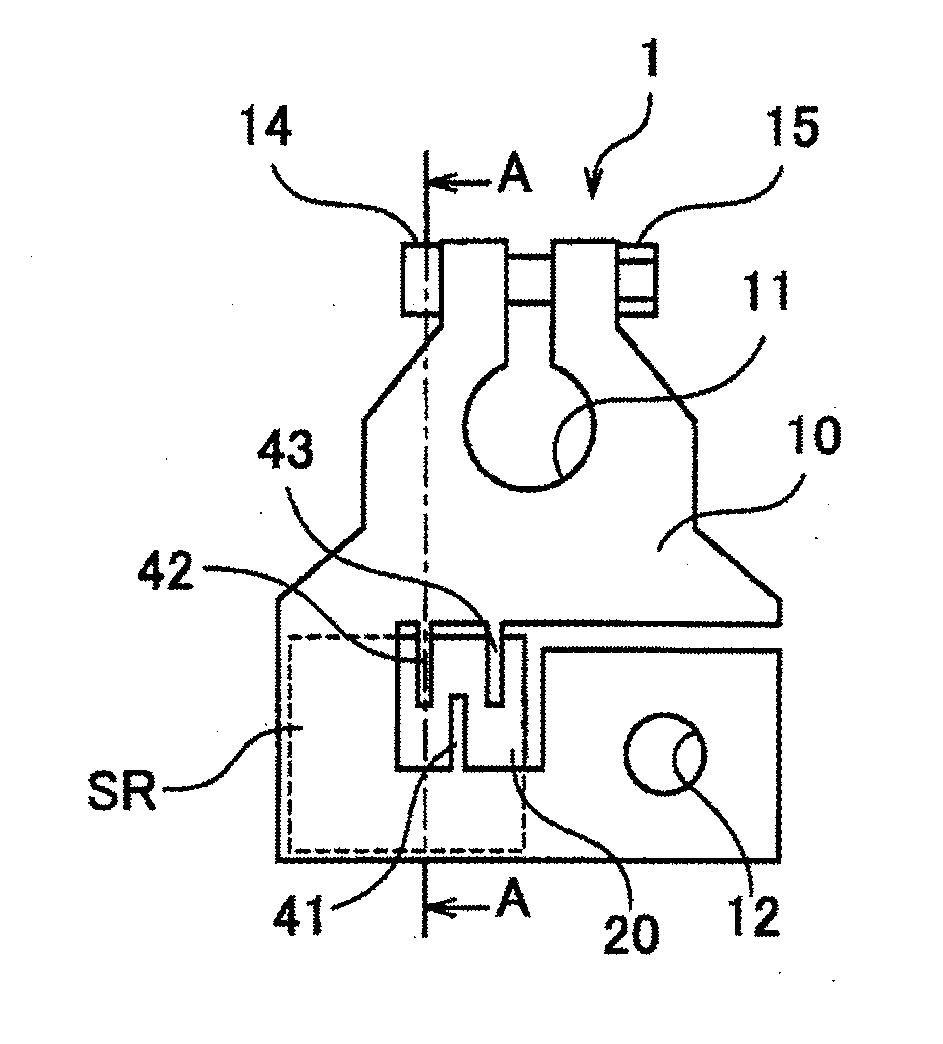Shunt resistance type current sensor
a current sensor and resistance type technology, applied in the direction of instruments, base element modifications, measurement devices, etc., can solve the problems of failure to meet the requirements of the application, and etc., to achieve the effect of easy deformation, reduced heat dissipation of each connection terminal, and reduced difficulty in soldering work to the circuit board
- Summary
- Abstract
- Description
- Claims
- Application Information
AI Technical Summary
Benefits of technology
Problems solved by technology
Method used
Image
Examples
Embodiment Construction
[0036]FIG. 1 is a top view schematically showing a shunt resistance type current sensor 1 according to an embodiment. FIG. 2 is a bottom view schematically showing the shunt resistance type current sensor 1 according to the embodiment. FIG. 3 is a side view schematically showing the shunt resistance type current sensor 1 shown in FIG. 1 and shows a state of the shunt resistance type current sensor 1 shown in FIG. 1 seen from a lower side of the sheet. The shunt resistance type current sensor 1 is used as a battery terminal and mainly configured of a bus bar 10 and a circuit board 20.
[0037]The bus bar 10 is a conductive member of a substantially flat plate shape and constituted of, for example, copper-manganese alloy, copper-nickel-alloy or the like. A part of the bus bar 10 can be acted as a shunt resistance part SR. The bus bar is configured in a manner that current to be measured flows in the shunt resistance part SR when current flows in the bus bar 10. The bus bar 10 is formed t...
PUM
 Login to View More
Login to View More Abstract
Description
Claims
Application Information
 Login to View More
Login to View More - R&D
- Intellectual Property
- Life Sciences
- Materials
- Tech Scout
- Unparalleled Data Quality
- Higher Quality Content
- 60% Fewer Hallucinations
Browse by: Latest US Patents, China's latest patents, Technical Efficacy Thesaurus, Application Domain, Technology Topic, Popular Technical Reports.
© 2025 PatSnap. All rights reserved.Legal|Privacy policy|Modern Slavery Act Transparency Statement|Sitemap|About US| Contact US: help@patsnap.com



